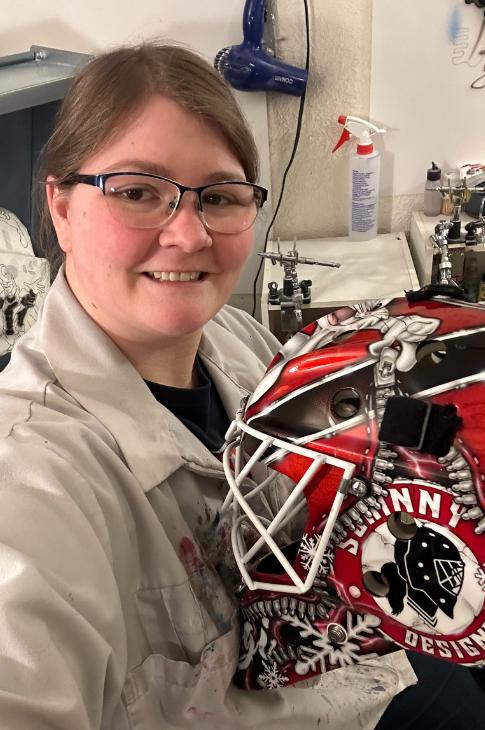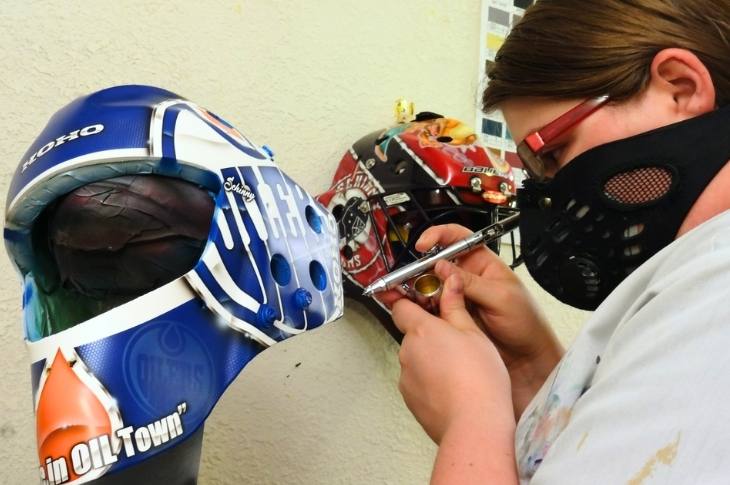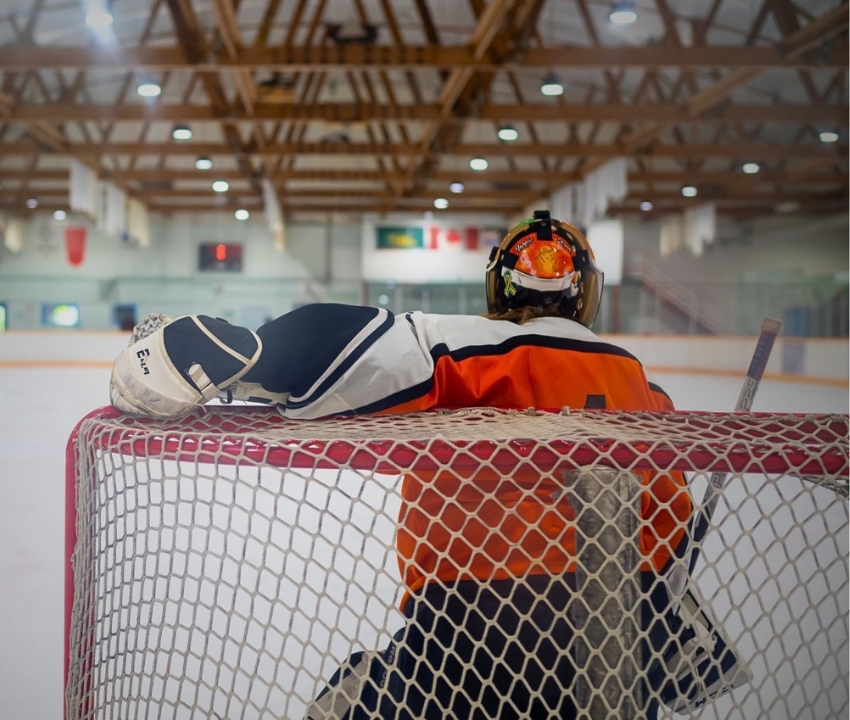From gliding across the ice to starting her own business as a custom ice hockey mask painter, Morgen Schinnour (Graphic Communications and Print Technology ’12) is passionate about the sport that launched her career.
“When I decided to play hockey, I wanted to be a goalie. I got a painted helmet from an online eBay auction that I won for $90 USD,” she laughs. “I thought goalies could look the coolest on the ice with painted gear.”
The delight of having a customized helmet sparked an interest in Schinnour, who had initially set her sights on working in design after graduation. When her job applications went unanswered, she remembered how much she loved painting goalie masks.
“I thought, I can at least do this as a side hobby, but it just got busier and busier,” she tells LINK writer Rachel Henry. “I made it happen.”
Now, almost 15 years since she first started painting, Schinnour is taking commissions six months in advance — a business milestone she’s still reeling from. Her clients include former Humboldt Bronco goalie Dane Dow, who asked Schinnour to design a mask to honour the 16 team members killed in the April 6, 2018, bus crash.


RH: How has your involvement in hockey influenced your career?
MS: I’ve always enjoyed hockey; I started playing around 2007. My favourite player is José Theodore, and he’s the reason I’m a goalie. I grew up watching him and idolized him.
My interest in designing masks blossomed when I received my helmet from the eBay auction. I asked the artist questions about how to airbrush, and she sent me a mini airbrush kit to practice with — she was incredible. Then in 2007, I entered the Design-A-Mask contest for the 2008 IIHF World Juniors (or simply known as "World Juniors"), where I won for the 13-and-Older category, and they had a mask painted with my design. That gave me confidence as an artist.
RH: What’s the process like to get a mask painted by you?
MS: Typically, clients will go online and send me their ideas like logos, colours and imagery, and we’ll work back and forth until they’re happy with it. I’ll provide a quote, and if it sounds good, I’ll book them into my schedule.
The length of time to paint a mask depends on the design. Some are less complex and usually take anywhere from one to two days, eight hours per day. Others can take up to five days.
RH: How did you become certified by hockey equipment manufacturers?
When I started my business, I wanted to be more professional, so I contacted sales representatives for Bauer and CCM, and later Otny, Coveted, Protechsport and Sportmask. It was a lengthy process, but I gave each company an overview of my process and the materials I use. Once approved, I was acknowledged as a certified painter.
This gives peace of mind to the goalies — companies don’t hand that certification out to just anybody. I wanted certification from Bauer and CCM because if something happens within their warranty period, they’ll cover the mask.
RH: Do you ever feel pressure from challenges you might face creating and executing designs?
MS: Sometimes a client doesn’t know how to express what they want, and being that I work through email, it can be challenging to get inside their head, but eventually we get it figured out.
Other times, the paint can be finicky in the airbrushes themselves. I have seven airbrushes that I use. There are some that have different needle sizes - the smaller the needle, the finer the line.
RH: How does it feel seeing your work on the ice?
MS: When I go to my local arena to watch WHL, I get to see my helmets on the ice. That’s pretty awesome. One Friday morning, I went to a local rink to play, and they had a goalie camp. I saw three goalies wearing my masks on the ice, which was pretty cool. I stood at the boards and had a proud mom moment.
I’ll often get “thank you” emails from clients after they’ve received their masks, some that I wouldn’t expect. Getting those customer responses makes me the happiest, and what I find the most rewarding.

Oki, Âba wathtech, Danit'ada, Tawnshi, Hello.
SAIT is located on the traditional territories of the Niitsitapi (Blackfoot) and the people of Treaty 7 which includes the Siksika, the Piikani, the Kainai, the Tsuut’ina and the Îyârhe Nakoda of Bearspaw, Chiniki and Goodstoney.
We are situated in an area the Blackfoot tribes traditionally called Moh’kinsstis, where the Bow River meets the Elbow River. We now call it the city of Calgary, which is also home to the Métis Nation of Alberta.
